
DENDROCHRONOLOGIA
metrics 2024
Connecting Nature's History with Today's Challenges
Introduction
Dendrochronologia is a prestigious journal dedicated to the study of tree rings and their implications for understanding environmental changes, climate variability, and ecological dynamics. Published by Elsevier GmbH in Germany, it has consistently reached high academic standards, holding a remarkable Q1 ranking in both Ecology and Plant Science as of 2023, demonstrating its significant impact within these fields. The journal aims to foster interdisciplinary dialogue through the dissemination of original research, reviews, and methodological advancements related to dendrochronology, appealing to researchers, students, and professionals who seek to deepen their knowledge of the interactions between terrestrial ecosystems and climate change. Although it does not currently offer an open access option, Dendrochronologia remains an essential resource for those in the scientific community, with valuable insights that contribute to the understanding of biodiversity and ecological resilience.
Metrics 2024
 0.85
0.85 2.70
2.70 2.90
2.90 57
57Metrics History
Rank 2024
Scopus
IF (Web Of Science)
JCI (Web Of Science)
Quartile History
Similar Journals
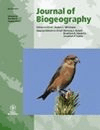
JOURNAL OF BIOGEOGRAPHY
Driving Insights into Ecological Frameworks and InteractionsJOURNAL OF BIOGEOGRAPHY, published by Wiley, stands as a premier multidisciplinary platform for the publication of high-quality research in the fields of biogeography and ecology. With an impressive Q1 ranking in both Ecology and Ecology, Evolution, Behavior and Systematics categories for 2023, this journal is recognized for its significant contribution to understanding ecological patterns and processes across geographic spaces. The journal, which has been in circulation since 1948 with a continuous production from 1979 to 2024, features rigorously peer-reviewed articles, critical reviews, and essential data that illuminate the dynamic interactions between organisms and their environments. While this journal does not currently offer open access options, it remains a valuable resource for researchers, professionals, and students seeking to explore the latest discoveries and theoretical advances in biogeography. With impressive Scopus rankings, including a 73rd position out of 721 in Agricultural and Biological Sciences and a 53rd position out of 461 in Environmental Science, the JOURNAL OF BIOGEOGRAPHY is indispensable for those aiming to advance their understanding of ecological frameworks and biodiversity conservation.

Ecological Processes
Innovating ecological research for global sustainability.Ecological Processes, published by Springer, is a premier open-access journal dedicated to advancing the understanding of ecological modeling and ecological processes. With a significant impact factor evidenced by its prestigious Q1 ranking in both Ecological Modeling and Ecology categories, as well as impressive Scopus rankings—41st out of 461 in Environmental Science and 7th out of 41 in Ecological Modeling—this journal is a vital resource for researchers, professionals, and students alike. Established in 2012 and operating under an open-access framework since its inception, Ecological Processes strives to provide a platform for high-quality research that addresses critical ecological challenges, ensuring wide dissemination of its articles to a global audience. The journal's focus encompasses various aspects of ecological modeling as well as practical implications for managing natural resources, making it an essential publication for anyone interested in the dynamics of ecological systems and their implications for sustainability.
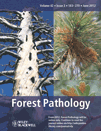
FOREST PATHOLOGY
Connecting Research and Practice in Forest PathologyFOREST PATHOLOGY is a premier journal published by Wiley that focuses on the intricate relationships between trees, pathogens, and forest health. With an ISSN of 1437-4781 and an E-ISSN of 1439-0329, this British journal has garnered an impressive reputation in the fields of Ecology and Forestry, achieving a Q2 Quartile ranking in both categories as of 2023. The journal invites researchers and professionals to explore cutting-edge studies and case reports that delve into forest pathology, contributing to the understanding of disease dynamics and management in forest ecosystems. Currently indexed in Scopus, it ranks 61st out of 174 in the Forestry category and 214th out of 461 in Ecology, reflecting its impact and relevance in advancing the field. Access options are available to cater to a wide audience, emphasizing the journal's commitment to disseminating vital knowledge that enhances forest management practices and ecological resilience. FOREST PATHOLOGY stands as an essential resource for those dedicated to the health and sustainability of forest ecosystems.

CANADIAN JOURNAL OF FOREST RESEARCH
Advancing knowledge in forestry and ecological sciences.Canadian Journal of Forest Research (ISSN: 0045-5067, E-ISSN: 1208-6037), published by Canadian Science Publishing, stands as a leading platform for disseminating cutting-edge research in the field of forestry and ecological sciences. With an impressive impact factor and a steady reputation for high-quality publications, this journal occupies a prestigious position indicated by its Q1 ranking in Forestry and Q2 in Ecology as of 2023, alongside commendable placements in global and planetary change studies. Covering a broad scope from sustainable forest management to the impacts of climate change on forest ecosystems, the journal encourages submissions that address contemporary challenges and innovations in forest research. Operating from its base in Ottawa, Canada, the Canadian Journal of Forest Research has been a cornerstone of academic discourse since 1974, offering researchers and professionals vital access to pioneering studies that inform policy and practice in forestry. Researchers, educators, and students alike will find this journal an indispensable resource for advancing knowledge and fostering collaboration in the vital realm of forest research.
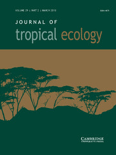
JOURNAL OF TROPICAL ECOLOGY
Driving Innovation in Ecological UnderstandingThe JOURNAL OF TROPICAL ECOLOGY, published by Cambridge University Press, serves as a pivotal platform for advancing knowledge in the field of ecology, particularly within tropical environments. With an ISSN of 0266-4674 and an E-ISSN of 1469-7831, this esteemed journal has been a key resource since its inception in 1985, maintaining a focus on empirical research that addresses the complexities of tropical ecosystems. It holds a respectable Q3 ranking in the Ecology, Evolution, Behavior and Systematics category as of 2023, indicating its significant contribution to the field, although it remains within the competitive mid-range. The journal publishes original research, reviews, and methodological articles that illuminate the rich biodiversity and unique ecological processes of tropical regions, fostering a deeper understanding of conservation challenges. Accessible from the United Kingdom, this publication appeals to a diverse audience of researchers, professionals, and students keen on exploring ecological dynamics in tropical settings, and plays a crucial role in promoting scientific discourse and collaborative efforts aimed at preserving our planet's vital ecosystems.
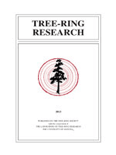
Tree-Ring Research
Exploring the Past, Present, and Future of Forest EcosystemsTree-Ring Research is a prestigious journal dedicated to advancing the interdisciplinary study of tree-ring science, encompassing atmospheric science, geology, paleontology, and forestry. Published by the TREE-RING SOC in the United States, this journal serves as a vital platform for researchers and professionals seeking to share innovative findings and develop collaborative methodologies in dendrochronology and its applications. With a commendable standing across multiple categories, including Q2 in Forestry and Q3 rankings in Atmospheric Science, Geology, and Paleontology for 2023, Tree-Ring Research holds an important position within the academic community. Researchers are encouraged to access recent studies and contribute their findings, fostering a rich dialogue that illuminates the complexities of environmental change and forest ecosystems. The journal's comprehensive scope and commitment to quality make it an essential resource for those engaged in understanding the critical role trees play in our planet’s ecological health and history.

TREE PHYSIOLOGY
Charting New Paths in Tree Physiology StudiesTREE PHYSIOLOGY, published by Oxford University Press, is a leading journal dedicated to the field of plant science and physiology, with a significant impact factor that highlights its importance in the academic community. Established in 1990, this journal has evolved to encompass a wide range of topics relating to the physiological processes of trees and woody plants, offering valuable insights to researchers and professionals alike. With its Q1 ranking in Plant Science and Q2 in Physiology for 2023, TREE PHYSIOLOGY is recognized for its high-quality, impactful research articles. Its Scopus rankings further emphasize its relevance, placing it in the top percentile within its categories, making it an essential resource for those involved in agricultural and biological sciences. Although it does not currently offer Open Access options, the journal remains committed to promoting the advancement of knowledge through rigorous peer review and scholarly excellence. Located in the United Kingdom, it serves an international audience, fostering collaboration and innovation in the study of tree physiology.
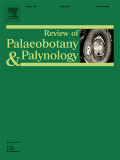
REVIEW OF PALAEOBOTANY AND PALYNOLOGY
Decoding the Legacy of Plant LifeREVIEW OF PALAEOBOTANY AND PALYNOLOGY, published by Elsevier, stands at the forefront of research in the fields of paleobotany and palynology. Since its inception in 1967, this esteemed journal has provided a vital platform for disseminating cutting-edge findings and comprehensive reviews that explore the intricate relationships between plant evolution, fossil records, and environmental changes. With its impressive categorization, being ranked Q1 in Paleontology and Q2 in Ecology, Evolution, Behavior and Systematics, it is recognized as a leading outlet for scholars, boasting a notable impact factor that underscores its influence within the academic community. Based in the Netherlands, the journal features a diverse range of open access options, although subscription models are also available, making it accessible to a broad audience of researchers, professionals, and students eager to delve into the complex histories of plant life. The REVIEW OF PALAEOBOTANY AND PALYNOLOGY not only champions original research but is also committed to enhancing interdisciplinary dialogue, thereby playing a crucial role in advancing our understanding of Earth's biological heritage from an evolutionary perspective.

Theoretical Ecology
Pioneering new frontiers in ecological modeling.Theoretical Ecology, published by SPRINGER HEIDELBERG, is a premier journal in the field of ecological modeling and theory, exemplifying the intersection of rigorous quantitative analysis and ecological understanding. With its ISSN 1874-1738 and E-ISSN 1874-1746, this journal has been a valuable resource for researchers since its inception in 2008, with a commitment to publish cutting-edge research until 2024. The journal's 2023 category quartiles demonstrate its impact, ranking Q3 in Ecological Modeling and Q2 in Ecology, reflecting its significance within the academic community. Furthermore, its Scopus rankings position it among the top tier of environmental science journals, ranking #181/461 in Ecology and #21/41 in Ecological Modeling. While the journal does not offer open access, it is an essential publication for those looking to deepen their understanding of theoretical frameworks that drive ecological research and practice. By providing a platform for innovative theories and models, Theoretical Ecology plays a crucial role in shaping future ecological studies and informing policy decisions in environmental management.
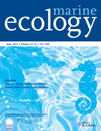
Marine Ecology-An Evolutionary Perspective
Pioneering Research in Aquatic EvolutionMarine Ecology-An Evolutionary Perspective, published by WILEY, is a renowned journal dedicated to advancing the understanding of marine ecosystems through the lens of evolutionary biology. Established in 1980, the journal has firmly positioned itself as a vital resource in the field, currently boasting a 2023 Scopus rank of #337 in Ecology, Evolution, Behavior and Systematics and a Q2 category ranking in Ecology. With a focus on original research and reviews that encompass a broad spectrum of marine ecological studies, this journal critically examines the mechanisms driving marine biodiversity and ecosystem dynamics. Researchers, professionals, and students alike benefit from the journal’s comprehensive insights and robust analyses, which are pivotal for fostering ecological knowledge and informing conservation efforts. Although currently not an Open Access publication, the journal remains accessible through various academic platforms, inviting the scientific community to engage with its vital contributions to aquatic science and the evolutionary processes shaping our oceans. With an impressive trajectory that extends until 2024, Marine Ecology-An Evolutionary Perspective continues to set benchmarks in marine research.